Without shelter, all your survival tricks are just theater. You can light fires, purify water, and talk about “bushcraft” all you want — but without protection from wind, rain, or cold, your survival won’t be measured in days. It’ll be hours. Maybe minutes. That’s why shelter comes before everything else.
If you don’t understand how to build safety from scratch, you’re already a liability.
Shelter, water, fire — these aren’t luxuries; they’re the core of survival. That’s why The Lost Frontier Handbook isn’t just a guide, it’s a manual for living when the modern world stops working.
Inside, you’ll learn how to:
- Build emergency shelters from scrap and earth
- Generate power when the grid goes dark
- Filter and store clean water anywhere
- Reinforce your property like the pioneers did — quietly and efficiently
If you believe survival is about skill, not luck, this is where you start.
Get The Lost Frontier Handbook Here
Improvised setups are good to know, but when nature hands you a ready-made option, take it. Caves were humanity’s first fortresses for a reason — solid, dry, and still standing after millennia. But don’t be stupid about it. A cave can save your life or bury you alive. Check for predators, loose rock, bad air, and flooding before you move in.
Bottom line: a cave is only as safe as your caution. Treat it with respect, and it’ll guard you. Treat it like a shortcut, and it might be your last.
Animals
Humans aren’t the only ones that use caves for shelter. Many animals do, too, and some of them can be dangerous. Before entering a cave check round the entrance for signs animals use it regularly. Tracks, or a worn path without human footprints, are obvious signs. A heap of gnawed bones is a strong hint you should find another shelter. If there’s no sign of animals around the cave entrance you can look inside. Check for signs of smaller animals, particularly bats and insects. If you find yourself sharing a cave with a bat colony there could be a serious rabies risk, and if you disturb a nest of wasps that could also be dangerous. Look out for snakes and spiders, too – they often use caves as homes. You 100% do not want to casually be reading something from your carry-on Prepper Disk and be attacked by a wild animal out of the blue.
The Amish have lived off-grid for centuries — not because they had to, but because they chose to. Their way of life proves that real independence isn’t about gadgets, it’s about know-how.
Learn the timeless systems that still keep families warm, fed, and safe — without tech, government, or corporate strings.
Discover The Amish Ways Academy
Fire
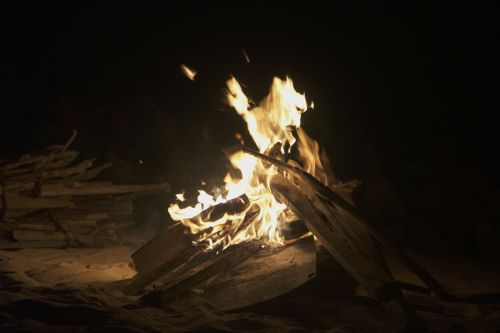 Caves will keep the rain and wind off you, but they’re not heated – and, because they’re surrounded by tons of rock, they can be pretty cold inside. Once you’ve found shelter from the weather inside one, you’re going to be tempted to start a fire to warm it up a bit. Unfortunately, there are a couple of dangers with that. If you build a fire too deep inside a cave, there’s a risk of smoke inhalation or even carbon monoxide poisoning.
Caves will keep the rain and wind off you, but they’re not heated – and, because they’re surrounded by tons of rock, they can be pretty cold inside. Once you’ve found shelter from the weather inside one, you’re going to be tempted to start a fire to warm it up a bit. Unfortunately, there are a couple of dangers with that. If you build a fire too deep inside a cave, there’s a risk of smoke inhalation or even carbon monoxide poisoning.
Another serious danger is accidentally causing a collapse. Fires can do this in a couple of ways. Heat the rock up enough and it can expand. If the rock above your fire is expanding but the rest of the cave isn’t, that can build up tension in the rock – and that tension could be released by the rock splitting, and a couple of tons of it falling on you. Cold weather also increases the risk. In winter, water that’s infiltrated into rock often freezes. Heat from a fire can melt it, allowing it to seep into deeper, colder rock where it freezes again. That changes the balance of stresses in the rock, and again can bring the roof down on you.
Before lighting a fire in a cave, check the rock. Igneous rocks like granite or basalt are the least risky – but unfortunately most caves are in sedimentary rock, and that’s much more likely to collapse when heated. The safest solution is to build your fire outside the cave entrance, with a reflector to direct heat into the cave.
Fire can save you — or kill you — and the difference comes down to knowledge.
The Wilderness Survival Guide teaches you how to read your environment like a predator, not prey. Learn to find food, build shelter, track danger, and stay alive when nature stops playing nice.
Whether you’re facing isolation or collapse, this isn’t theory — it’s practice.
Grab The Wilderness Survival Guide at a 76% discount here!
Collapses
Even without a fire, collapses are always a danger in caves. Again, igneous rock is safer than sedimentary, but no cave is immune to collapsing. If you’re planning on sheltering in a cave and you’ve already verified there are no other dangers lurking in it, check for any signs of instability in the roof. Cracks are an obvious warning signal. If there are cracks in the roof, and small stones or rock fragments on the floor below them, get out of the cave right away; something up there has shifted recently, and it might not take much to bring it all the way down. Obviously, if you find a recent rockfall inside a cave you should also leave immediately – the roof is clearly unsafe.
Flooding
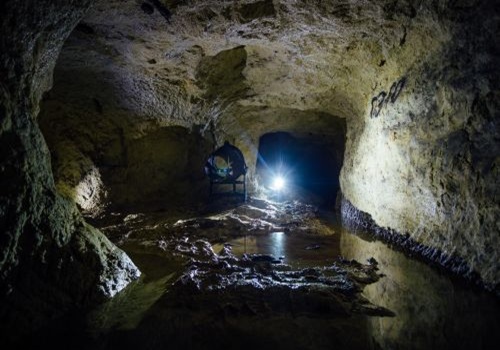 Caves keep the rain out, but they can be vulnerable to flooding. Take a look at the floor. Is there sediment that looks like it was laid down by water? Is the rock smoothed and polished, like riverbed rocks? Those could be signs that, at least some of the time, water flows through the cave. Check the walls for water staining, too. Getting trapped inside a flooded cave can be extremely dangerous.
Caves keep the rain out, but they can be vulnerable to flooding. Take a look at the floor. Is there sediment that looks like it was laid down by water? Is the rock smoothed and polished, like riverbed rocks? Those could be signs that, at least some of the time, water flows through the cave. Check the walls for water staining, too. Getting trapped inside a flooded cave can be extremely dangerous.
There’s no doubt, a cave can be a lifesaver. A lot of people have survived because a handy hole in the rock gave them protection from the weather. They also have potential dangers though, and before taking refuge in one you need to balance the risks and rewards. If you need a survival shelter and there’s a cave handy, it’s definitely an option you should investigate. Just take some time to investigate first, to make sure you’re not putting yourself into a situation that’s even more dangerous than staying outside. As tempting as that cave might be, if it’s vulnerable to one of the hazards we’ve looked at you’ll be better off finding or building a different shelter.
You can survive without power, but not without knowledge.
Every step outside your door hides medicine, food, and defense — if you can identify it. That’s the real survival edge: knowing which plants heal, which feed, and which keep trespassers away.
The Forager’s Guide To Wild Foods turns the wilderness into your pharmacy, pantry, and protection plan. You’ll learn to:
- Identify edible and medicinal plants by sight
- Brew natural antibiotics and painkillers
- Create repellents and poultices from weeds
- Recognize toxic lookalikes before it’s too late
When you know the land, you don’t just survive — you adapt, thrive, and outlast.
Become the kind of prepper who doesn’t fear collapse — because you’ve already learned to live beyond it.
Get The Forager’s Guide To Wild Foods HERE!
You may also like:
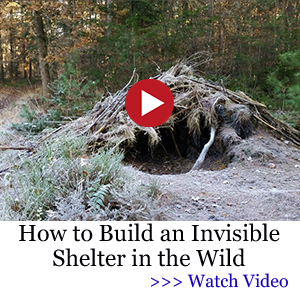 The Survival Shelter They Don’t Want You To Know About
The Survival Shelter They Don’t Want You To Know About
If You See This Plant in Your Backyard, Don’t Step on It (Video)

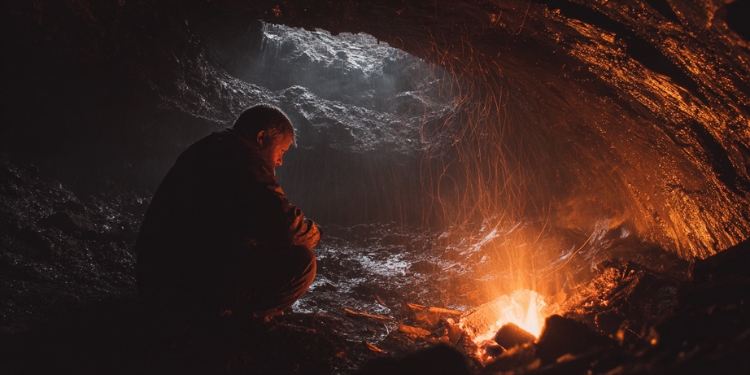












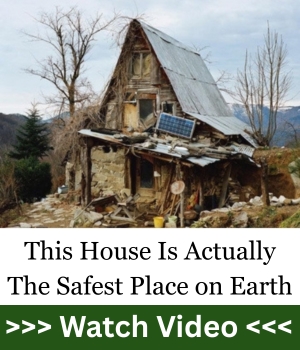







This article , while informative, is kinda goofy.
Caves in the Civil War, Italian Campaign in WW2, Bunkers in WW1, and so on.
Neaderthals.
C’mon.
I add Miners.
I did the thumbs down because there are cave ins and all the above mentioned have had people who died in the cave in. In the flash flood. In the drying out overhead collapse from fire. People dying from carbon monoxide because of no air flow. I guess you forgot about the kids soccer team trapped in a flash flood and the Special Forces diver who died trying to rescue them just a couple years ago.
Caves are no joke and definitely nothing to scoff at.
I think we lost a lot of cave men, due to collapses. I mean who reported in the paper that Ugh was lost in a cave in last night ? Good thing we had extra cave men. Its always a risky place to live.
Mostly, caves are WET and COLD, with poor air quality, thats just MORE obstacles to overcome. Might save your life short term, But get building above grade ASAP, and think insulation right after you think element blocking. Next comes heat, learn how to make a fire place or have a wood stove ready to go